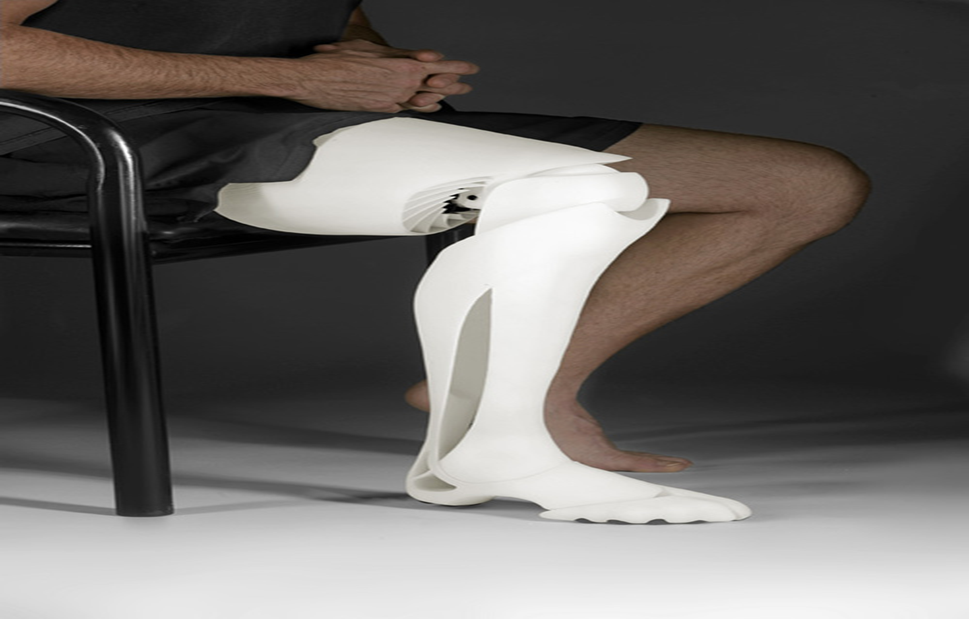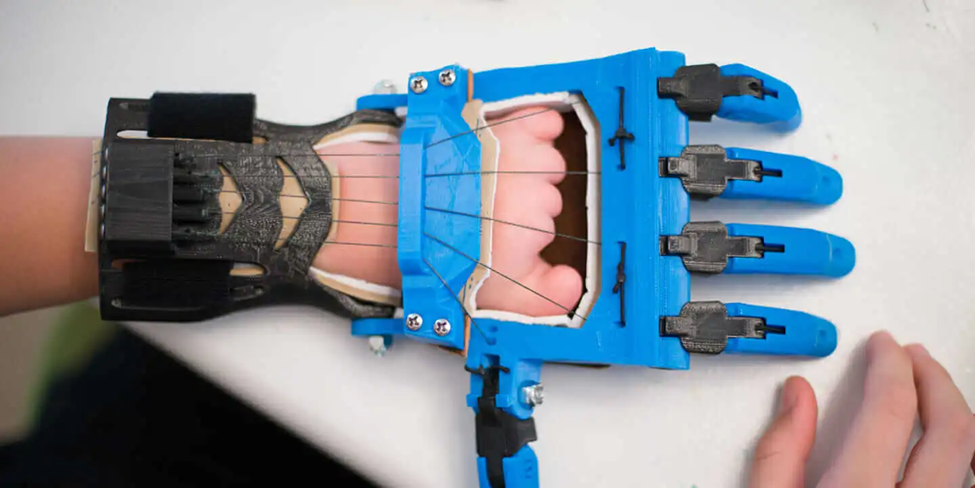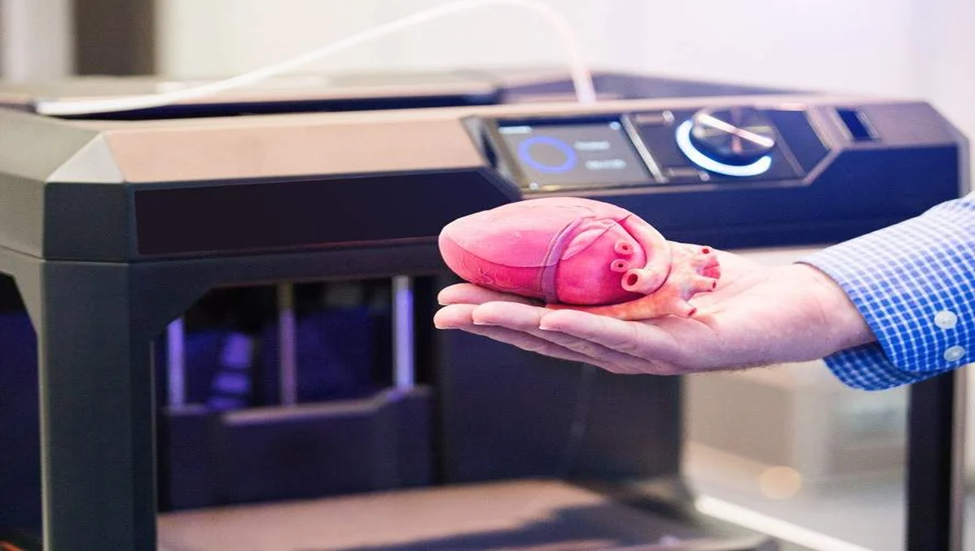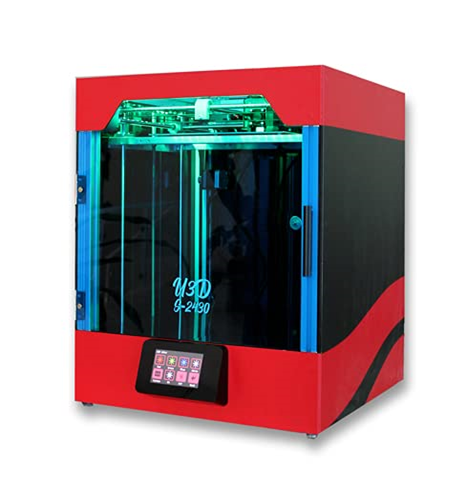Have you ever wondered what the future holds for medicine? You're actually living it. Under our very eyes, 3D printing is revolutionizing the healthcare industry. In operating rooms across the globe, a technology that was formerly considered futuristic for producing toys or auto parts is now saving lives. Physicians are producing personalized surgical instruments, prosthetic limbs, implants, and anatomical models with 3D printers. They are creating custom solutions for patients with specific medical requirements.
You may soon have a personalized 3D-printed cast for a broken bone or a 3D-printed pill dispenser in your house. With the help of 3D printing, medicine is undergoing a transformation and doctors now have superpowers they could only have imagined a decade ago. The fantastic future is now a reality.
Medical Applications of 3D Printing

Additive manufacturing, also referred to as 3D printing, enables medical professionals to create personalized medical equipment and devices on demand. Some fascinating ways in which this state-of-the-art technology is changing medicine are:
Prosthetics and implants
A patient's specific anatomy can be taken into account when creating highly customized prosthetic limbs, joints, and implants using 3D printers. Because these gadgets are built specifically to fit the body of the user, they offer improved form, fit, and functionality.
Surgical planning models
Surgeons frequently plan intricate procedures using 3D printed models of the anatomy of their patients. Before entering the operation room, these models assist them in choosing the optimal strategies and foreseeing obstacles. Better results, fewer problems, and quicker surgical timeframes are all brought forth by 3D models.
Tissue engineering
Researchers may now manufacture whole organs or even living tissues thanks to 3D bioprinting. Scientists are able to construct blood veins, bone, cartilage, and other tissues by carefully arranging human cells and biomaterials. 3D bioprinting is still in its early stages, but it has the potential to save many lives and end the organ scarcity dilemma.
Personalized medicine
The development of individualized medications catered to a patient's genetic makeup or ailment is being expedited by 3D printing. Pharmaceutical companies can expedite the release of innovative medications into the market by printing personalized pill capsules, tablets, and implants for clinical trials. Medicines made with a personalized 3D printer may be more effective and have fewer negative effects.
Without a doubt, 3D printing will keep improving medical technology. Lives could soon be improved in ways that are beyond our wildest dreams because to this ground-breaking technology. The potential of 3D printed medicine is intriguing and offers fresh hope for resolving some of the biggest issues facing the medical field.
3D Printed Prosthetics and Implants

Customized prosthetics, implants, and anatomical models are made possible by 3D printing, which is transforming the medical field.
Prosthetics were once one-size-fits-all, but thanks to 3D printing, they can now be customized for each person. Using 3D scans of a patient's residual limb and range of motion, 3D printers may create prosthetic hands, feet, and limbs. These prosthetics frequently have a more realistic appearance and improve control and dexterity. Some businesses are even 3D printing kids' prosthetic limbs, which they may exchange for bigger sizes as they become bigger.
Dental implants, hip replacements, and vertebral implants that closely match a patient's anatomy are examples of 3D printed implants. To guarantee that the implants are positioned precisely during surgery, surgeons employ 3D printed guides. Because there is less harm to the surrounding tissue, patients recover more quickly.
Before performing complex surgeries, doctors can rehearse using anatomical models created from thirty scans. Surgeons are able to identify the most effective strategies, foresee difficulties, and reduce dangers. Additionally, students use the models to engage in interactive anatomy instruction.
Living tissues and organs can now be printed using 3D bioprinting technology. Already, skin, bone, cartilage, blood vessels, and a miniature human heart have all been 3D printed by researchers. 3D bioprinting, while still in its experimental stages, has the potential to alleviate the organ scarcity crisis and enable recipients to obtain transplants using their own tissues and organs.
Customization enabled by 3D printing is genuinely transforming the medical field. 3D printing is enabling patient-specific treatments and expanding the frontiers of medical technology, from prostheses and implants to anatomical models and organs. The use of 3D printing in medical technology has a promising future.
3D Printing for Surgical Planning and Guides
The medical field is only one of the numerous industries that 3D printing technology has transformed. Surgeons' planning and execution of procedures are changing as a result of the models, implants, and surgical guidance produced by 3D printers.
Surgical Planning
Surgeons frequently construct 3D printed models in order to pre-plan difficult surgery. They are able to observe inside structures, cancers, and other organs in their exact size and shape. This aids in deciding on the best course of action and preparing them for any obstacles. Before performing the procedure on the real patient, they can also test and practice it on the model. Shorter recovery times and better results are the results of this.
Patient-Specific Guides
Custom surgical, cutting, and drilling guides may be made for every patient thanks to 3D printing. These instructions give the surgeon a route plan to follow during the procedure, based on the specific anatomy of the patient. This makes it easier to guarantee precise implant placement, such as for knee or hip replacements. The guides can also be employed to precisely fit the implant's contours by reshaping bone. All of this helps to provide procedures that are more accurate, less invasive, and need shorter recovery times.
Custom Implants
Certain medical devices, such as hip implants, have conventional sizes that might not be appropriate for every patient. A patient's exact anatomical match can now be achieved with bespoke implants thanks to 3D printing. Patients typically experience superior fit, functionality, comfort, and naturalness with these customized implants. Cobalt-chrome alloys, polyethylene, titanium, and other materials can be used to make them.
The use of 3D printing is improving patient outcomes by improving accuracy, precision, and surgical models and guidance as well as personalized implants. This cutting-edge technology will only serve to advance medicine and enhance lives in the future. Surgeons may now diagnose and treat each patient's ailment in a way that is really tailored thanks to the instruments at their disposal.
The Future of 3D Printing in Medicine

3D printing has a very bright future in medicine. This ground-breaking technology has the potential to significantly advance medical research, patient care, and diagnosis.
Personalized Treatment
Individualized treatment plans will be possible thanks to 3D printing. Physicians may construct incredibly accurate reconstructions of a patient's anatomy using 3D scans. These models enable physicians to perform difficult surgeries in advance and assist them in deciding on the best course of care. Medical equipment, prostheses, and implants made with 3D printing can also be precisely tailored to a patient's needs. For instance, cranial plates or hip implants made of titanium that are 3D printed to precisely match the bone structure of the patient.
Drug Development
The use of living human cells and tissues in 3D bioprinting will revolutionize the way we create and evaluate new medications. Human tissues, including as skin, bone, and cartilage, can be printed by researchers to test medications for toxicity and efficacy without endangering people or animals. These tissues and organs that were 3D printed closely resemble how the medications will behave in the human body. This can expedite the drug discovery process and improve the safety and dependability of clinical studies.
Remote Medicine
Doctors will be able to diagnose and treat patients remotely as 3D scanning and printing technology advance. Physicians can perform remote examinations and 3D print specialized medical equipment that a local physician can implant or utilize using high-resolution 3D scans. This makes highly specialized care available to individuals who live in remote or undeveloped areas. Surgeons utilizing robotic surgical equipment from a distance may even be able to perform remote surgery.
The practice of medicine is about to undergo a radical change because to 3D printing. The future of healthcare will be shaped by 3D bioprinting, customized treatment regimens, and remote medicine, even if these fields are still in their infancy. The only thing limiting the possibilities seems to be our imagination. The use of 3D printing in medicine has a promising future.
Conclusion
Because of the advancements in 3D printing, the future of medicine seems promising. Physicians will have the ability to treat patients in ways that we never would have imagined. Anatomical models, implants, and prosthetics can all be customized to meet your particular requirements. Surgery is something that can be honed and refined. The understanding of rare ailments can be improved by printing copies of the organs or tissues afflicted. Who knows what advances in medicine the next ten years will bring as 3D printing gets cheaper, faster, and more sophisticated? Even though 3D printing technology is still in its infancy, it has already transformed and saved numerous lives. The options appear to be infinite. 3D printers have the potential to become common equipment in hospitals and clinics worldwide in the near future, enabling medical professionals to give you and your loved ones the best care possible. Though the future is uncertain, 3D printing has the potential to transform medicine in ways that are beyond our wildest dreams.






Leave a Reply